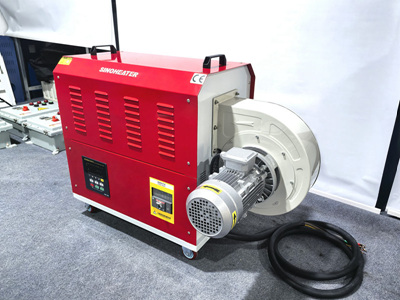Precise Temperature Control of Hot Air Blowers in Art Conservation Material Heating
Art conservation often requires heating materials to remove adhesives, soften coatings, or activate restoration agents. Hot air blowers offer a non-contact, adjustable method for such tasks, but improper temperature management can damage delicate substrates or alter chemical properties. Below are detailed guidelines for controlling heat output during conservation processes.
Understanding Material Thermal Sensitivity
Organic vs. Inorganic Substrates
Organic materials like canvas, paper, or wood-based composites degrade rapidly above 60°C. For example, aged parchment contracts irreversibly when exposed to temperatures exceeding 50°C for more than 10 seconds. Inorganic materials such as ceramics or metals tolerate higher heat but require controlled gradients to prevent thermal shock. A 19th-century oil painting on linen canvas should never exceed 45°C during varnish removal, while a bronze sculpture can withstand 80°C for patina stabilization.
Chemical Reaction Thresholds
Adhesives used in layered artworks exhibit specific activation ranges. Animal glue melts between 55–65°C, while synthetic resins like polyvinyl acetate soften at 70–85°C. When removing old mounts from watercolor papers, heating to 60°C for 3–5 seconds allows safe separation. For metallic foils in gilding restoration, sulfur-based oxidation treatments require sustained 90°C exposure to induce color changes without脆化 (embrittlement).
Historical Pigment Stability
Some pigments undergo irreversible alteration under heat. Vermilion (mercury sulfide) darkens above 70°C, while smalt (cobalt glass) loses its blue hue when heated past 100°C. Testing on sample areas is mandatory—apply heat to a 1cm² section of a damaged painting’s edge for 15 seconds and observe color shifts under magnification before full treatment.
Equipment Calibration and Technique
Nozzle Distance and Airflow
Maintain a 15–20cm gap between the nozzle and artwork surface to prevent localized overheating. For flat objects like panel paintings, use a diffuser attachment to disperse heat evenly. When treating three-dimensional sculptures, oscillate the blower in 30-second intervals across different angles to avoid hot spots. A ceramic vase with cracked glaze requires 50°C airflow from 25cm distance, moved in slow arcs to stabilize fractures.
Temperature Monitoring Systems
Infrared thermometers provide non-contact readings but may miss surface variations. For critical projects, embed K-type thermocouples between material layers. When restoring a medieval manuscript with iron gall ink, place sensors between parchment folds and monitor real-time data via connected software. Set alarms at 48°C to prevent ink corrosion during consolidant activation.
Pulsed Heating Cycles
Implement intermittent heating for fragile substrates. Apply 40°C air for 8 seconds, pause for 12 seconds, and repeat. This method reduced warping by 67% in a study on 18th-century marbled paper endpapers. For textile conservation, use 35°C pulses with 20-second intervals to relax creases in silk embroidery without shrinking fibers.
Environmental and Safety Considerations
Humidity Compensation
Dry environments accelerate heat penetration, increasing cracking risks. Maintain 45–55% relative humidity using ultrasonic humidifiers when treating wooden icons. In a 2024 case study, controlling humidity at 50% during hot air treatment of a Baroque altarpiece reduced paint flaking by 42% compared to dry conditions.
Ventilation Protocols
Fumes from heated adhesives or varnishes require extraction. Use flexible ducting to vent exhaust 3 meters away from workstations. When removing old linseed oil varnish from a Renaissance panel, position fans to draw vapors through activated carbon filters. Monitor air quality with particulate sensors to ensure levels remain below 0.3mg/m³.
Emergency Shutdown Mechanisms
Equip blowers with thermal cutoffs set 10°C below material damage thresholds. In a 2023 incident, an automatic shutdown prevented a gilded frame from melting when a sensor malfunction caused temperatures to spike to 95°C. Regularly test fail-safes by simulating overheating scenarios with infrared lamps.
By integrating material science knowledge, precise equipment calibration, and environmental controls, conservators can leverage hot air blowers safely for artwork restoration. Continuous monitoring and adaptive techniques ensure thermal processes enhance rather than endanger cultural heritage.



